Mental retardation is often confused with mental retardation. But these are 2 different pathologies - with CRD, children have preserved intelligence. On time started correction children with this diagnosis have a high chance of recovery.
Record content:
- 1 General information
- 2 Comparative characteristics
- 3 What leads to CRA?
- 4 How is the disease classified?
- 5 Characteristics of the disease
- 6 Signs of illness
- 7 How does communication take place?
- 8 Emotional condition
- 9 Diagnostics
-
10 Treatment
- 10.1 Drug therapy
- 10.2 Microcurrent treatment
- 10.3 Bioacoustic correction (BAC)
- 10.4 Classes with a speech therapist and a speech therapist
- 10.5 Classes with a child psychologist
- 10.6 Osteopathy
- 10.7 Creative pursuits
- 11 Forecast
- 12 Video about ZPR
General information
Delayed mental development is a pathological slowdown in the normal pace of mental development in children. With this pathology, individual functions of the psyche do not correspond to the norms adopted for each child age.
For example, a child with CRD at 3 years old cannot speak, has a primitive behavior, while a normally developing child of the same age already asks questions about the world around him and knows simple words and phrases.
The diagnosis of CRD is applicable only up to the beginning of secondary school age. If, after 10-11 years, signs of CRA persist, this speaks of infantilism - the immaturity of personality development, in which a person does not know how to be independent.
CRA is a reversible pathology. The earlier the disease is detected, the higher the chances of its complete elimination without consequences for the further development and quality of life of the child.
Comparative characteristics
Mental retardation is a syndrome caused by organic brain damage, and is manifested by a lack of intellectual abilities. Most often, mental retardation is congenital, less often acquired as a result of any disease.
Mental retardation is an exclusively acquired diagnosis. Development in such children proceeds in the same way as in the norm, but at a slower pace.
What leads to CRA?
The reasons for CRA can be:
- unhealthy course of pregnancy (mother's disease during gestation, alcohol, drug use, smoking, intrauterine infections and fetal hypoxia);

- birth injury;
- acquired infections and injuries in a child;
- chronic diseases in a child;
- frequent and long-term traumatic situations;
- social factors (limited emotional contact with the mother, deprivation and inhibitions from an early age).
In more rare cases, CRD develops after DPT vaccination. Also, the cause of the pathology can be the intake of any medications.
How is the disease classified?
There are 4 types of ZPR:
- CRA of constitutional etiology - characterized by an undeveloped sphere of manifestation of emotions and volitional qualities. A child with this diagnosis is characterized by childish spontaneity, pronounced play behavior, violent emotions; it is difficult for him to make decisions. Also, a child with constitutional CRD is very dependent on his mother, in her absence he feels helpless.
- CRD of somatogenic etiology - the causes are various diseases of the body (infections, chronic pathologies, neuroses, congenital and acquired diseases of the nervous system). Children with somatogenic PDD are fearful, shy, which is why they have difficulties in communicating with adults and peers. Also, often the reason for the formation of this type of mental retardation is the child's overprotection - as a result, the child does not develop independence, which inhibits the development of the psyche.
-
ZPR of psychogenic etiology. Most often it develops due to unfavorable situations in the family, aggression towards the child (or if the child witnesses manifestations of aggression). Also, the reason for the delay in the development of the psyche can be long-term traumatic situations outside the family. Their influence contributes to the formation of fearfulness and lack of initiative in the child.

- ZPR of cerebral-organic (psychophysical) etiology. It develops as a result of organic brain lesions caused by pathologies of pregnancy, birth asphyxia or neuroinfections. Children with psychophysical mental retardation are distinguished by a very weak expression of emotions, poor imagination, and poor speech. School-age children have problems with writing, reading, are not able to make a plan of action while working.
Characteristics of the disease
Children diagnosed with mental retardation do not control their actions and in most cases do not obey the established rules, since they do not perceive them.
The main activity of such children is play, that is, they only like to play. Unlike children with a normal rate of formation of mental processes, children with mental retardation are not interested in the world around them and quickly lose interest in anything.
Speech development and cognitive activity are markedly reduced due to poorly developed logic and abstract thinking. It is difficult for a child to distinguish the signs of an object; he often confuses colors and sizes.
Signs of illness
Delayed mental development is a pathology that in the future can lead to infantilism, so it is important to identify signs of deviation as soon as possible.
It is possible to determine the presence of CRD by the following symptoms: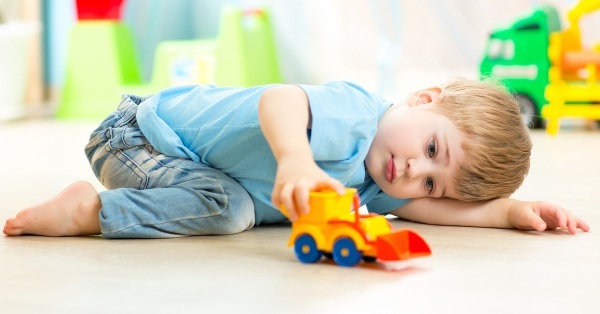
| Symptom | Description |
| Weak emotional-volitional sphere | The child ignores the rules, not realizing what they are for. This symptom sometimes manifests itself in the form of tantrums and aggression, since the child does not understand why it is necessary to ask permission (in order, for example, to take someone else's thing). |
| Age-appropriate play activities | In games, children do not have a specific plot, their actions are primitive in nature. For example, at 5-6 years old, children with CRD can mechanically roll a toy car back and forth, and children without violations development at the same age are already interested in designers, role-playing games ("mothers and daughters"), build toy at home. |
| Physical activity | In the case of CRD, there are 2 different situations associated with the child's motor activity:
|
| Lack of household skills | Children with CRD in some cases do not know how to dress and eat on their own. Some do not ask to go to the toilet themselves. |
| Difficulty mastering study skills | It is difficult for a child to master reading, writing, drawing due to restlessness and inattention. He does not want to fulfill the teacher's assignments. You can notice this sign during preparation for school. |
How does communication take place?
Preschool children with mental retardation are most often lonely, as it is difficult for them to build peer relationships due to difficulty learning the rules, as well as fear, delayed reactions, and problems with speech.
Children without developmental disabilities very rarely accept a child with mental retardation into their company; and if a child with CRD is in a group of children who develop by age, then he hardly interacts with them. If 2 children (healthy and with disabilities) play together, then they have almost no verbal communication.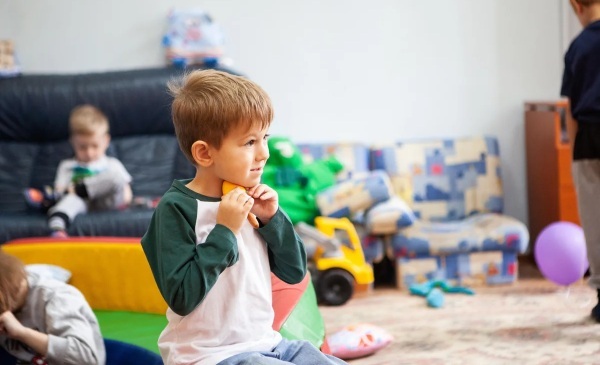
It is also difficult for schoolchildren with DPD to build communication with peers - they prefer to work alone. In some cases, the child has a fear of the collective, and he tries to avoid it. The school-age child also tends to be attracted to young children, as they accept him better.
Children of all ages with mental retardation are characterized by inability to maintain a dialogue. They cannot clearly answer even the simplest question, listen and are afraid to speak in the presence of other people (especially strangers).
Emotional condition
In most cases, children with CRD have a lag in emotional development, which is expressed in weakness of volitional efforts - when the child is not able to make an effort on himself to do what "necessary".
Also, children with mental development disorders may have excessive anxiety, their mood easily changes. Any reason, even the most insignificant, can cause strong emotional excitement, laughter (inappropriate in some situations). In conversations, they are often overly emotional, speak loudly and, in general, look agitated.
Schoolchildren of elementary grades (especially those who studied in a regular school before special school) have low self-esteem due to the fact that they compare their successes with others.
Children with mental retardation are characterized by the inability to accurately describe their emotional state in any situation.
Diagnostics
A whole group of doctors is involved in the diagnosis and treatment of mental retardation: a neurologist, a speech pathologist, a speech therapist, and a psychotherapist. If you suspect CRD, you first need to contact a neurologist, who, after examination, will give referrals to other specialists.
During the diagnosis, the doctor collects an anamnesis, including data on the composition of the family, the child's illness, the psychological environment surrounding him. All the symptoms noticed by the parents must be taken into account.

Also, the neurologist conducts a conversation with the child, during which he monitors the following factors:
- expression of emotions;
- speech;
- facial expressions;
- Attention;
- the ability to build primitive logical chains and cause-and-effect relationships.
For more accurate diagnostic results, the child is offered special tests:
| Method name | Target | Description | Result |
| Liepin's technique | Assessment of the distribution and maintenance of attentiveness. | The child is given a sheet on which objects of 3 types are depicted: spruce, balls and mushrooms. Items are located 8 in each row. To assess the continued attentiveness, the child must cross out the row of balls. To identify violations of the distribution of attention, the child must cross out the row with spruce trees with a red pencil, and the row with balls - blue. |
If a child experiences noticeable difficulties in completing the task and shows a result below 50%, then this indicates impairments in the development of attention and the presence of DPD. |
| Kogan test | Exploring schematic thinking. | The child is offered a table with images of figures of different colors, as well as cards with images of the same figures and colors. Testing is carried out in 2 stages:
|
If a child experiences noticeable difficulties in completing the task and shows a result below 50%, then this indicates impairments in the development of attention and the presence of DPD. |
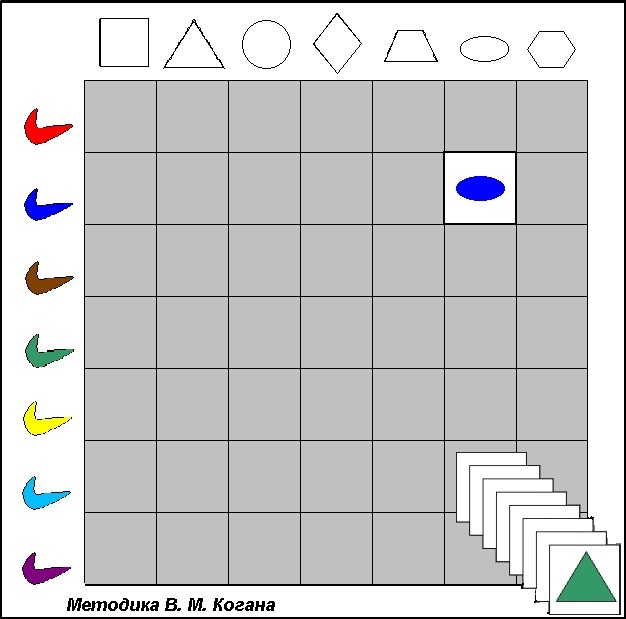
Specialists conduct additional testing aimed at studying the development of speech, emotions, intelligence.
In some cases, laboratory and instrumental diagnostic methods are prescribed, the purpose of which is to identify the reasons for the delay in the development of the psyche. They may prescribe an ultrasound scan and an encephalogram of the brain, a genetic test, and blood tests for infections. In rare cases, blood tests are prescribed to detect autoimmune pathology, which can inhibit the development of the psyche.
Treatment
Mental retardation requires a comprehensive approach to treatment. For this, various methods are used, the purpose of which is to stabilize the work of the nervous system, activate brain activity and stimulate mental processes.
Drug therapy
The main group of drugs prescribed for mental retardation are nootropics.
They have a stimulating effect on the nervous system:
- enhance mental activity and cognitive functions of the brain (memory, attention);
- increase learning ability;
- increase the resistance of the brain to hypoxia;
- improve microcirculation of blood in the brain.
They can also prescribe sedatives - they have a calming effect, improve sleep and eliminate excess arousal.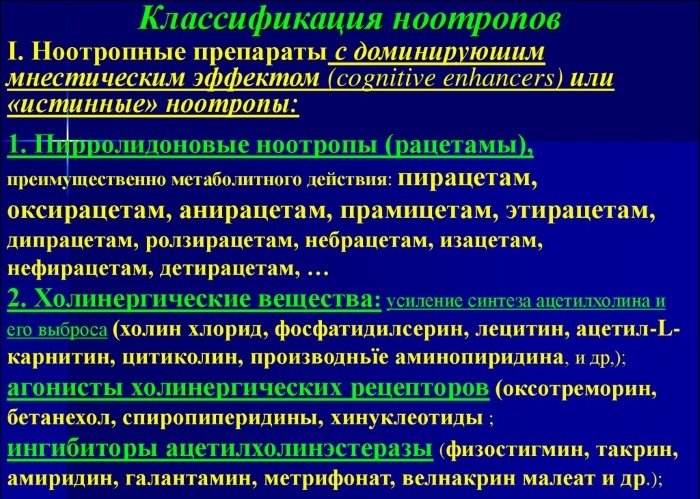
The choice of the drug depends on the severity of the pathology, the individual characteristics of the child's body, the presence of organic lesions.
Microcurrent treatment
Microcurrent treatment refers to reflexology methods. It consists in the action of electrical impulses on the areas of the cerebral cortex. With ZPD, the areas responsible for speech motor skills, comprehension and repetition of words are exposed. Reflexology is carried out in courses 1-2 times a year for several procedures.
As a result of treatment, the child undergoes the following changes:
- understanding of speech improves;
- phrasal speech and coherent conversational speech are developing;
- logical thinking develops;
- primitive reading and writing skills are developed;
- the simplest everyday habits are formed;
- improves memory and attention.
Bioacoustic correction (BAC)
Bioacoustic correction is a modern and innovative method of influencing the structures of the brain. It is carried out using a special computer program that converts brain signals received from the encephalogram into sound.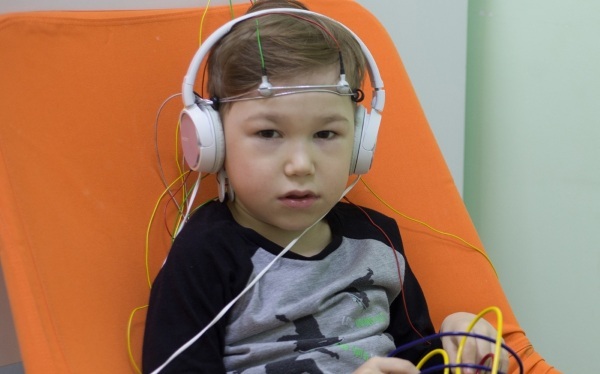
Thus, the patient listens to his own brain through headphones. With the reverse effect of sound on the neurons of the brain, self-regulation of the body occurs and the restoration of the normal functioning of the nervous system. The procedures are also carried out by the course.
Classes with a speech therapist and a speech therapist
When treating mental retardation, speech therapy classes are required to eliminate speech problems.
To do this, apply:
- finger games to develop fine motor skills;
- articulatory gymnastics to improve the pronunciation of sounds;
- hearing development games;
- onomatopoeia games;
- logarithmics (is a system of motor exercises together with speech activity).
Classes are necessarily carried out in a playful way - this way the child learns the material more easily without whims and tantrums. The specialist also conducts speech therapy massage, which helps to activate the work of the facial and cervical muscles. As a result of this, facial expressions, chewing movements are stimulated and speech reflexes are consolidated.
Working with a defectologist is aimed at developing logical thinking and mastering basic concepts: colors, sizes, shapes. Games are held to combine objects and images in groups, depending on the listed concepts. Also, classes with a defectologist help to increase the concentration of memory and attention in a child, improve his perseverance, and form everyday skills.
Classes with a child psychologist
Consultations and special classes with a psychologist are necessary if the child's mental retardation is associated with psychological trauma, chronic stress, unfavorable family environment, lack of established contact with parents.
The psychologist helps the child to gently overcome the effects of stressful situations, as well as to increase the effectiveness of the main treatment. The psychologist must necessarily talk with the parents of the child and explain to them the reason for the delay in the development of the psyche and how to eliminate these reasons.
Osteopathy
Osteopathy belongs to the methods of alternative medicine and consists in the effect on the tissues and structures of the patient's body. An osteopathic doctor helps to restore structures to their physiological position, remove “clamps” and “blocks” in the body and, most importantly, identify the cause of a particular pathology and eliminate it.
During work, the doctor examines the patient's body with his hands for excessive muscle and ligament tension, displacement of bone-cartilaginous structures or organs, tendon tension, slow blood flow. Osteopathic procedures are especially useful for those children in whom MRI is a consequence of trauma, including childbirth.
As a result of exposure to certain points of the body, the child's nervous system and psyche are stabilized, the metabolism in the body is improved, neurohumoral processes are accelerated.
Creative pursuits
Creative activities help to increase and consolidate the result of treatment and improve the child's motor skills. As such activities, you can choose collecting puzzles and constructors, sculpting and drawing.
Additionally, you can create games for guessing sounds, voices of animals and the sound of musical instruments. Fairy tale therapy has proven itself well, as it helps to expand consciousness and fantasy, to show creativity.
Also, with a delay in mental development, gymnastics, dancing, outdoor games are useful. This is especially true for those children who have a low level of physical activity. The listed activities help to strengthen the muscles of the child, develop his physical skills, and improve general motor skills.
When engaging in creativity and sports, parents can be involved - this contributes to strengthening the child's contact with mom and dad, the formation of communication skills. Also, the presence of parents nearby helps the child to calm down.
Forecast
Mental retardation is not a sentence. With timely referral to a specialist and early start of treatment, the chances that the child will be able to catch up on the level of development of their peers and successfully study in a regular school, it is essential rise. If CRD is not caused by organic damage to the central nervous system, then the pathology can be cured in a short time.
By the age of 6-7 years of a child's life, the chances of completely curing the mental retardation are minimal, and then he will experience difficulties when studying in a regular school. For such children, there are special correctional classes in which there is a small number of students (no more than 12 people) and an individual approach is provided to the child. Classes in such classes are conducted by teachers-defectologists.
When treating cerebrovascular accidents, it is important to follow all the doctor's recommendations, create a favorable environment at home (to exclude stress and trauma to the child's psyche), communicate more with the child and engage with him creative and active activities.
At the same time, you do not need to overly patronize the child - it is important to let him be independent for the formation of everyday habits and skills, but still he should be supported. It is only necessary to guide the child and, if necessary, correct his actions.
Identified mental retardation must be treated. It is important to detect the symptoms of pathology in time and not to start the situation, since in the future this will lead to the fact that the child will not have everyday skills, will not be able to study normally and communicate with people.
Video about ZPR
On mental retardation in children:



